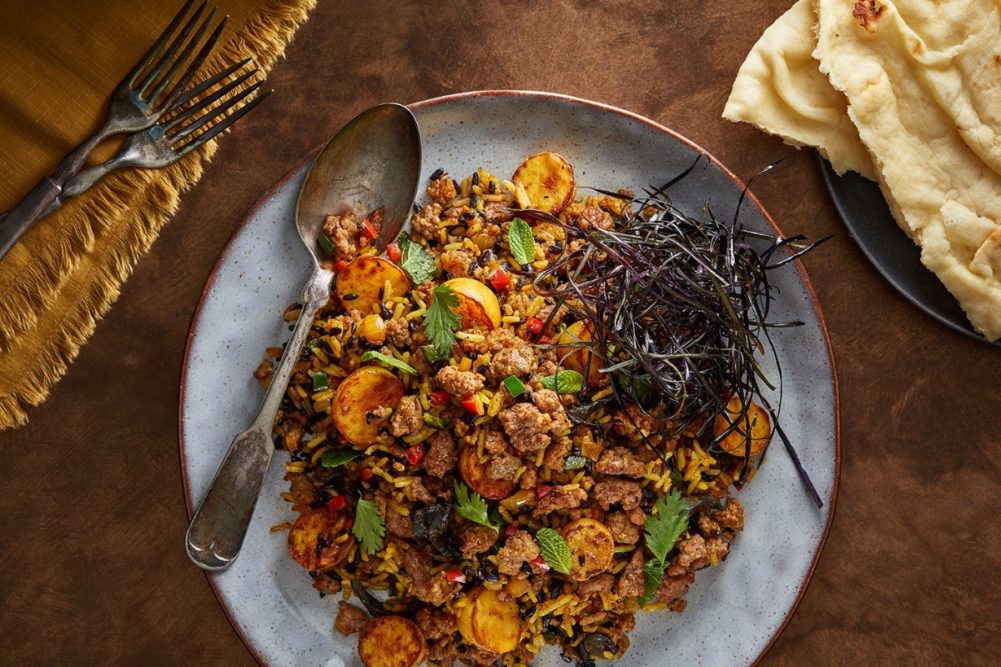Per capita consumption of lamb in the United States has remained steady over the past 10 years but is still quite low at about 1 lb per person per year. This red meat, however, is gaining traction among health- and wellness-conscious consumers because of its impressive nutritional profile. Lean lamb, for example, contains four times more iron than chicken and twice the amount found in pork. It also provides an array of essential nutrients, including zinc, omega-3 fatty acids and B vitamins. Grass-fed lamb is particularly high in heart-healthy omega-3s. What makes lamb really stand out is its earthy, gamey flavor that pairs well with seasonings not typically used with red meats, such as citrus, cucumber, dill and mint, rendering it ideal for menu innovation.
Meat & Livestock Australia recently worked with chef Michael Slavin of Houlihan’s restaurants to develop recipes for foodservice and the growing number of home cooks looking to explore global flavor innovation during the pandemic. His lamb with dirty rice starts with the New Orleans classic and then he gives it an Indian twist.
“I really like respectfully blending nontypical culinary applications with cooking techniques,” Slavin said. “In this case, Indian flavors with a spin on Creole dirty rice. Both are grounded in building depth of flavor and rich color using the single-pot cooking method.”
He first browns ground Aussie lamb in a cast-iron skillet, then sautés fragrant, bold ingredients together, including ginger, garlic, turmeric, harissa, Kashmiri chile powder, tikka masala powder, salt and black pepper.
“The rendered fat from the ground lamb activates and blooms the dried spices nicely when they are toasted in the pan. This is a big driver of the desired final color and flavor,” Slavin said.
Flavor building continues with the addition of trumpet mushrooms, onion and pepper, and the assertive, familiar flavors of India, namely cloves, cinnamon, cumin and cardamom. The base of Slavin’s dish is a combination of baby Dutch potatoes, jasmine rice and black rice. Fresh mint and cilantro garnish the dish. As a final flourish, he adds eggplant crackling, which is a dramatic tangle of super crispy eggplant peel.
Such flavor innovation is being done to fuel lamb consumption in the United States. Currently, about 20% of lamb is eaten during the spring holidays, according to the American Lamb Board, Denver. Urban shoppers are the most likely to dine on lamb, with the highest consumption occurring on the East and West Coasts. In 2015, lamb demand was up 7% compared to 2014 and increased again in 2016 by 2.5%.
Bone-in lamb chops and legs are likely the most familiar forms found in the United States, and also the most expensive, which makes lamb cost-restrictive for some home cooks. Ground lamb is more affordable and lends itself to all types of dishes, from British shepherd’s pies to boldly spiced Middle Eastern kofta (meatballs). Most Americans associate lamb with Greek cuisine, including gyros and pastitsio, a baked pasta dish with ground lamb and béchamel sauce.


